
The CHARA Array
Nic Scott
Telescope Systems Scientist












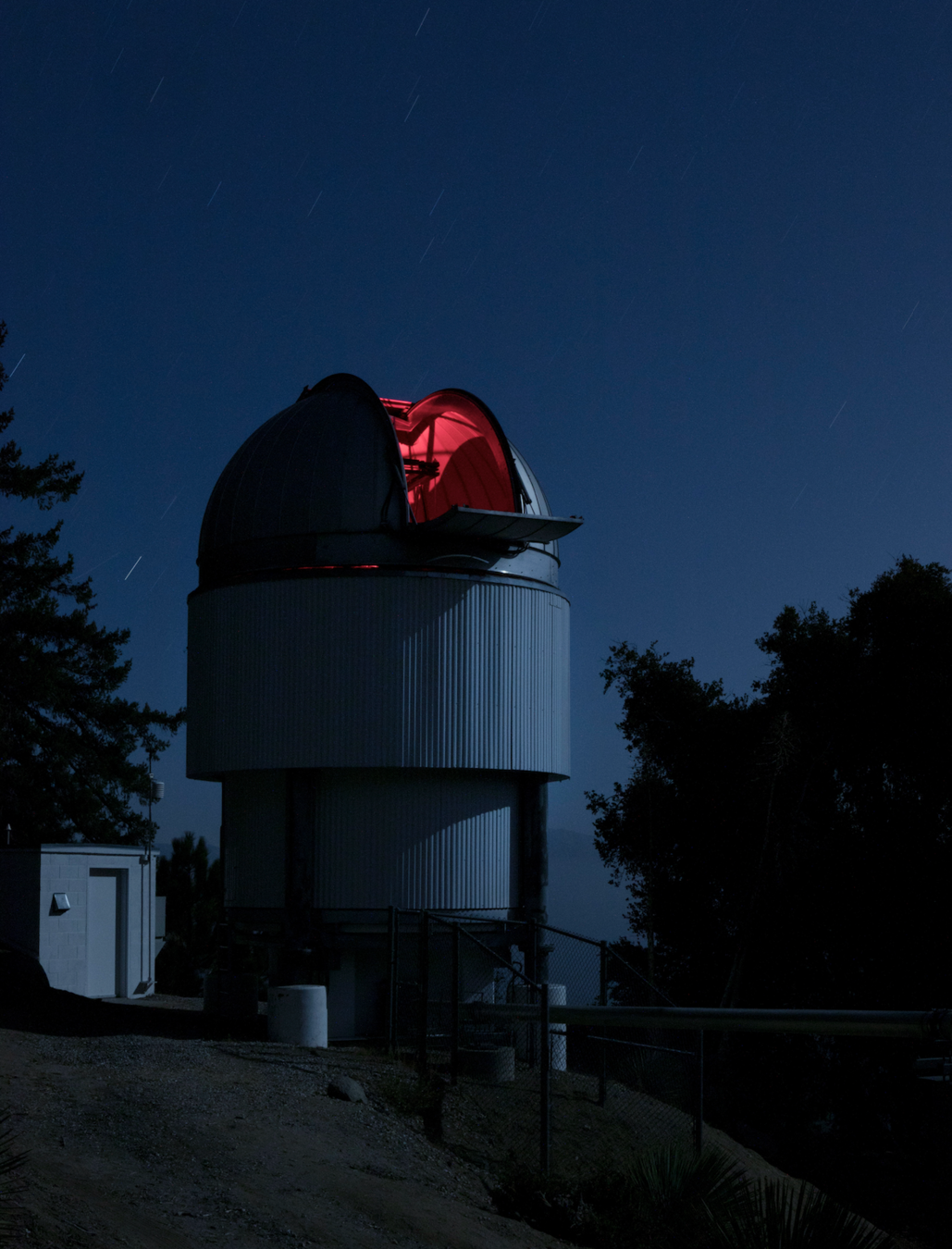
BNL Visit
Apr 8th - 11th 2025

Georgia State University, Atlanta
Director: Douglas Gies
CHARA Array
Mount Wilson Observatory, California
Director: Gail Schaefer
16 staff members onsite
Operations funded through the NSF, GSU, collaboration partners











Center for High Angular Resolution Astronomy
Not pictured yet: Heven, new operator

CHARA Science meeting 2023 - Atlanta, GA
CHARA Science meeting 2024 - Tucson, AZ


Next meeting: April 28-30th Nice, France

the CHARA Array
The Array is capable of resolving details as small as 200 micro-arcseconds, equivalent to the angular size of a coin seen from a distance of 10,000 miles (16,000 km).


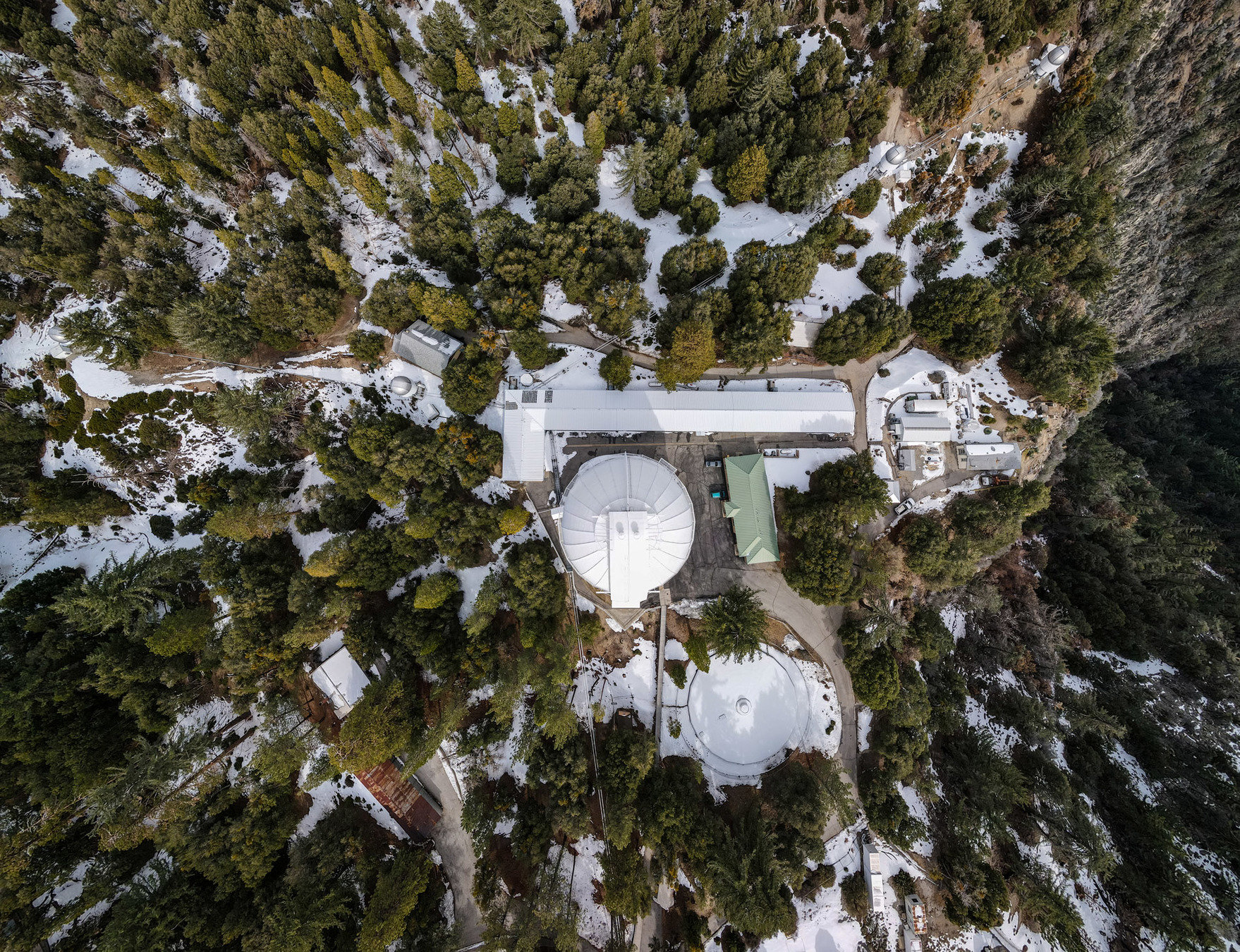

the CHARA Array
"the CHARA Array continues to offer exceptional opportunities for scientific discovery using the longest operating baselines in the world among optical/near-IR interferometers"



CHARA timeline
- 1984 - "CHARA" established
- 1994 - NSF funding awarded
- 1996 - Mt. Wilson ground broken
- 1998 - Keck funding added
- 1999 - First fringes between S1/S2
- 2001 - First starlight fringes on longest baseline
- 2003 - Construction completed
- 2005 - First journal paper - dia. of Regulus (McAlister)
- 2007 - Image of surface of Altair (Monnier)
- 2010 - Open access program initiated
- 2025 - 272 paper published so far
" technical improvements in both hardware and software will continue indefinitely.
one rationale for the facility is to serve as a testbed for new developments in optical interferometry."

| 2010 | Band | Limits | |
|---|---|---|---|
| TipTilt | R | 10-11 | |
| Classic | 2T | K | 7.7-8.7 |
| CLIMB | 3T (commiss.) | K | 6.5-8.1 |
| FLUOR | 2T | K | 3-3.5 |
| MIRC | 4T | H | 4.5 |
| PAVO | 2 or 3T | R | 6-8.2 |
| VEGA | 4T | R | 4-7.5 |
| 2024 | Band | Limits typ (best) | |
|---|---|---|---|
| AO | R | 12-14 | |
| Classic | 2T | K | 8.5 (9.3) |
| MIRC-X/MYSTIC | 6T | H/K | 7.5 (8) |
| PAVO | 2 or 3T | R | 7 |
| SPICA | 6T | R | 7-8 |
| SILMARIL (com) | 3T | HK | 8.5 (9-12 expected) |



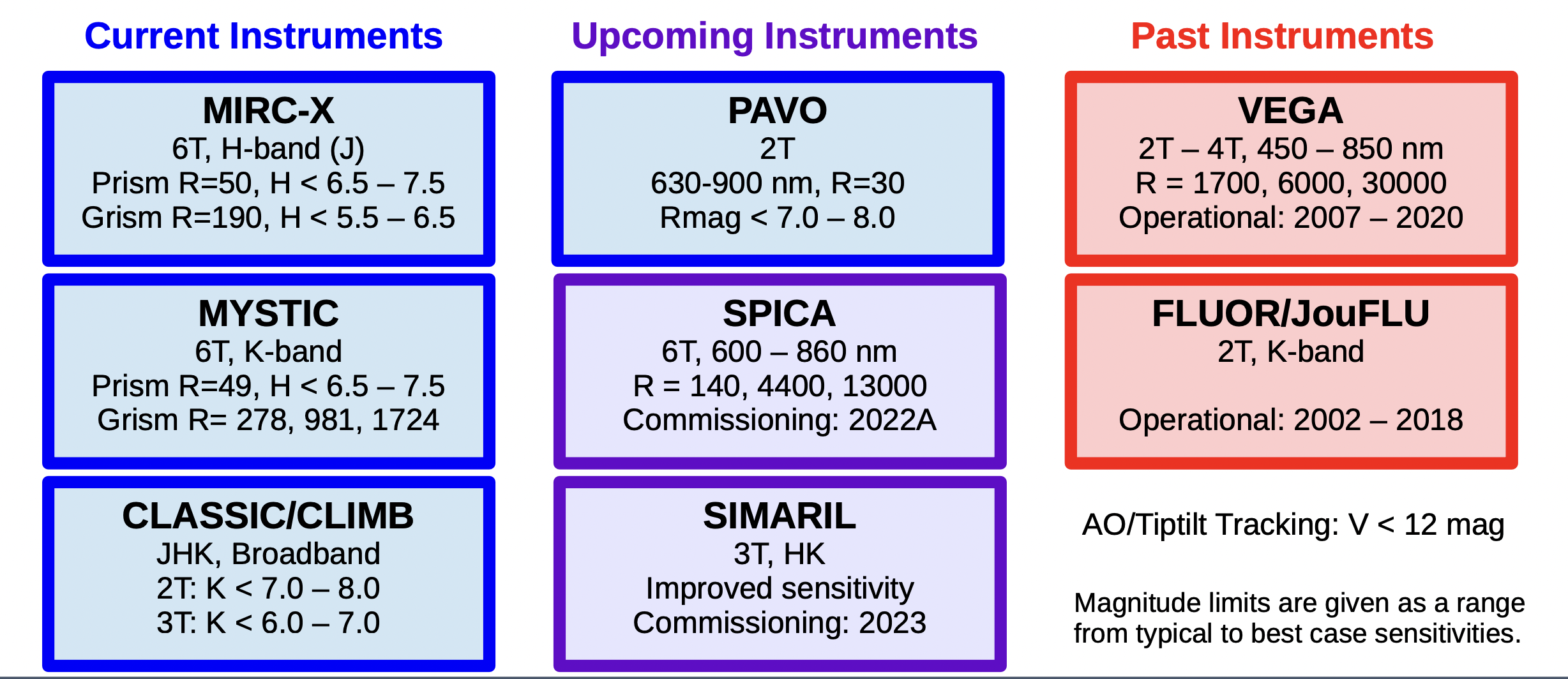
Current Beam Combiners
CHARIOT - 2 beam, K-band IO testbed
MIRC-X/Mystic
MIRC-X
- dispersed spectral channels
- J and H-bands
- MIRC-X/MYSTIC can be used simultaneously
- images of stellar surfaces and circumstellar disks
- precision closure phases
- faint binary companions.


STS & STST
MYSTIC (the Michigan Young STar Imager at CHARA)
- K-band, cryogenic, 6-beam combiner
- All-in-One 6T or high sensitivity 4T gravity chip
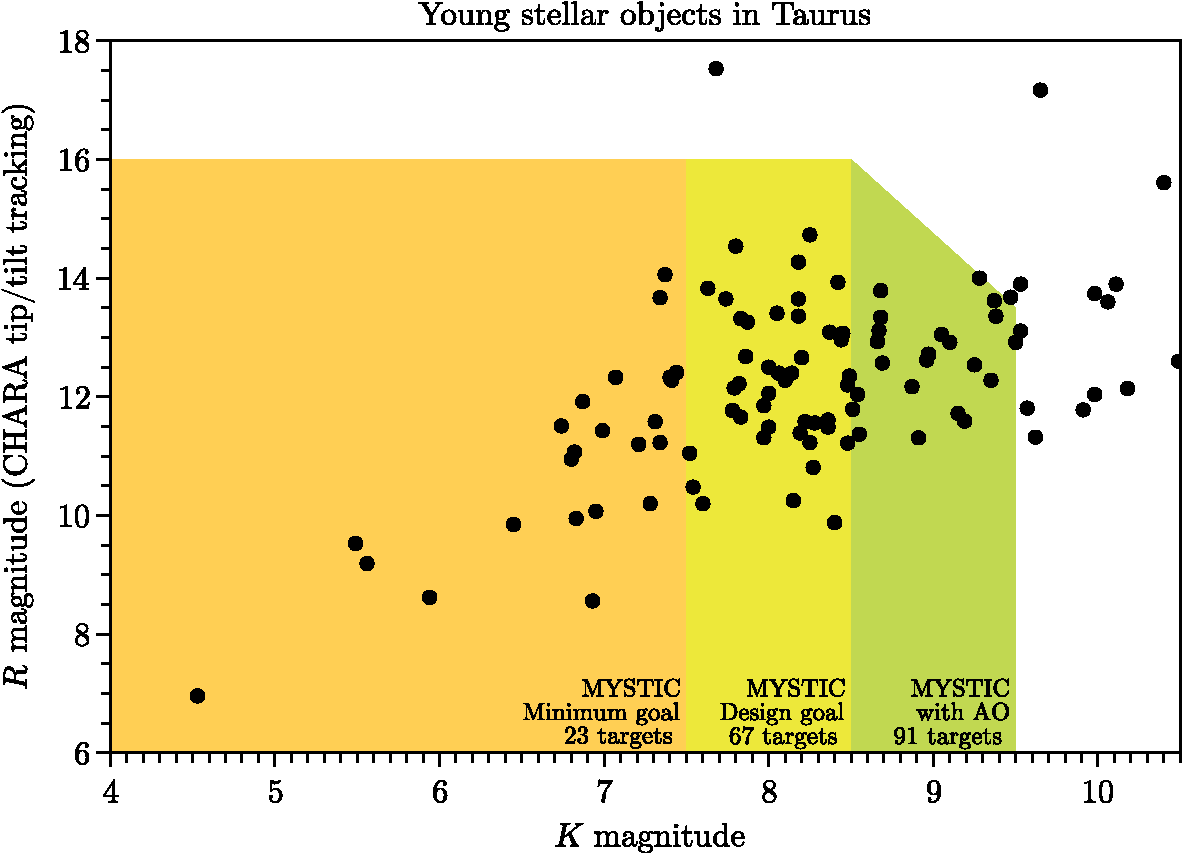
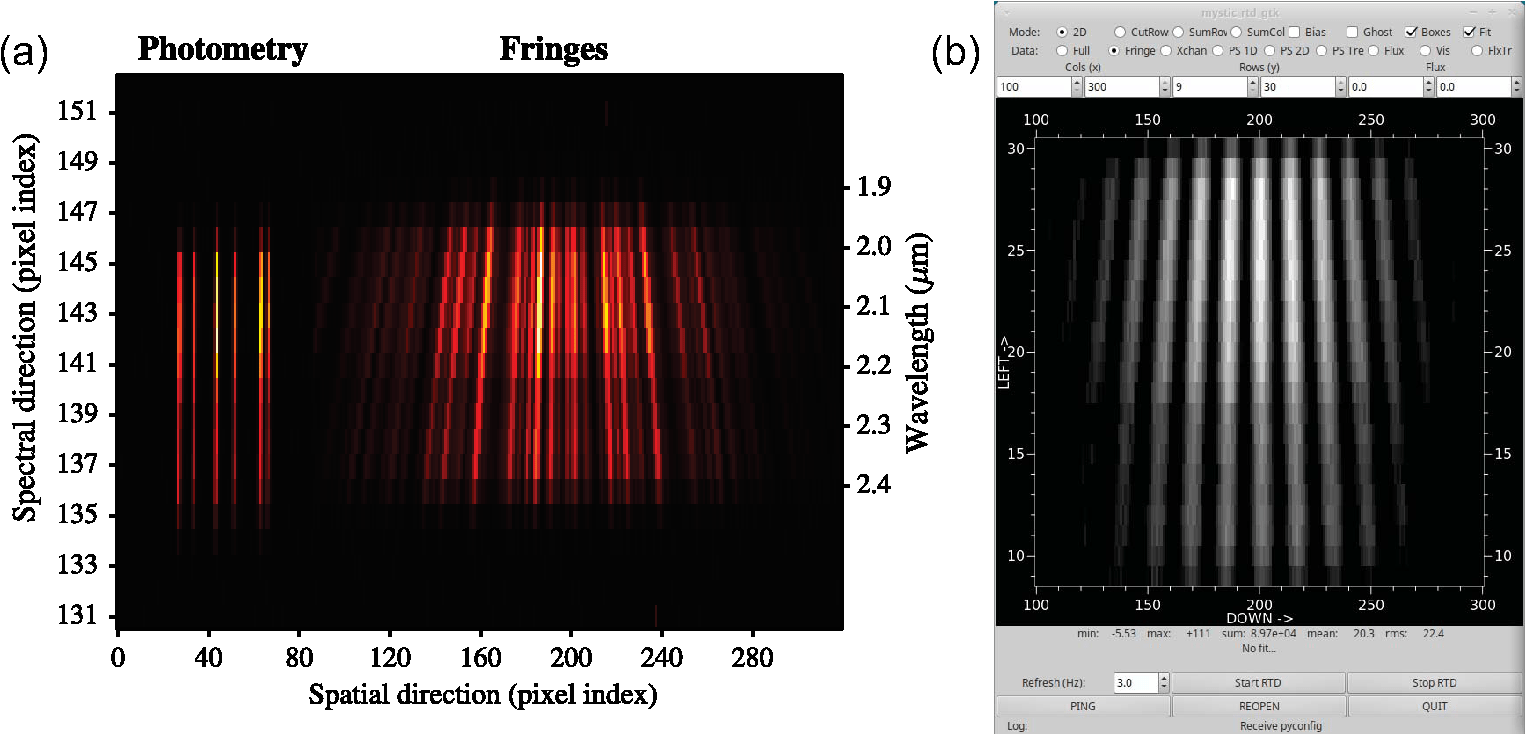


SILMARIL

Aug 2023 - First fringes
- 3T combiner (ten Brummelaar, Tuthill, Lanthermann)
- Designed for high sensitivity and faint targets
- CRED-1 in place

SPICA
(Stellar Parameters and Imaging with a Cophased Array)

SPICA-FT H-band 6-beam ABCD combiner by VLC Photonics, inspired by GRAVITY
low-resolution mode uses MIRC-X for fringe-tracking
The goal of the SPICA project is to provide a large and homogeneous set of stellar parameters across the HR-diagram. - measure the angular diameters of 1000 stars.

spectrograph


Aug 2023 - First fringes with SPICA/MIRC-X/MYSTIC
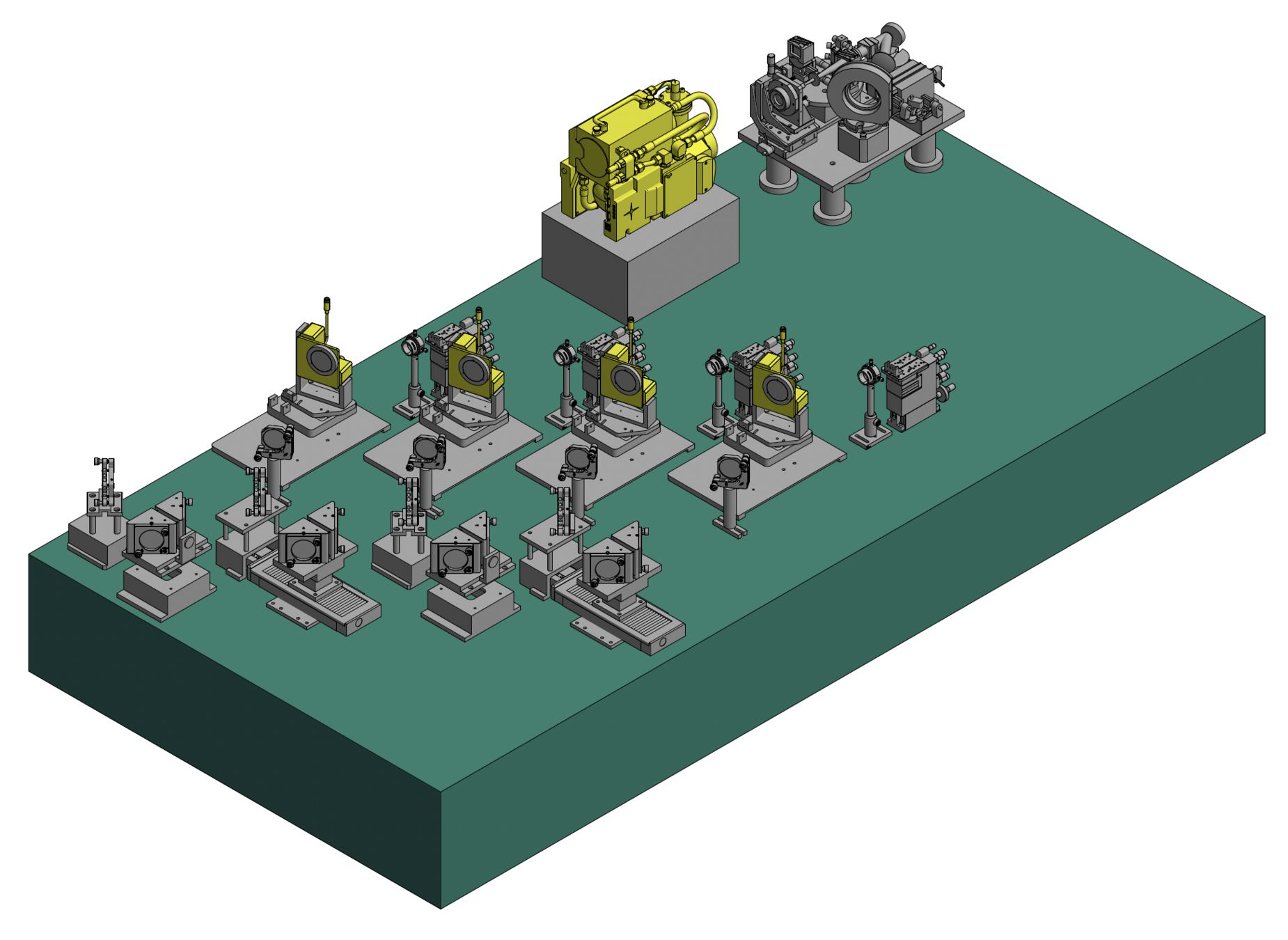
Currently two injection stages
CHARIOT
(CHARA Array Integrated Optics Testbed)
collaboration with Leibniz Institute for Astrophysics Potsdam (AIP)
ULI optics for JHK bands
(Siliprandi, Labadie, Madhav, Dinkelaker, Thompson, Benoît)



Apr 2024 - First fringes

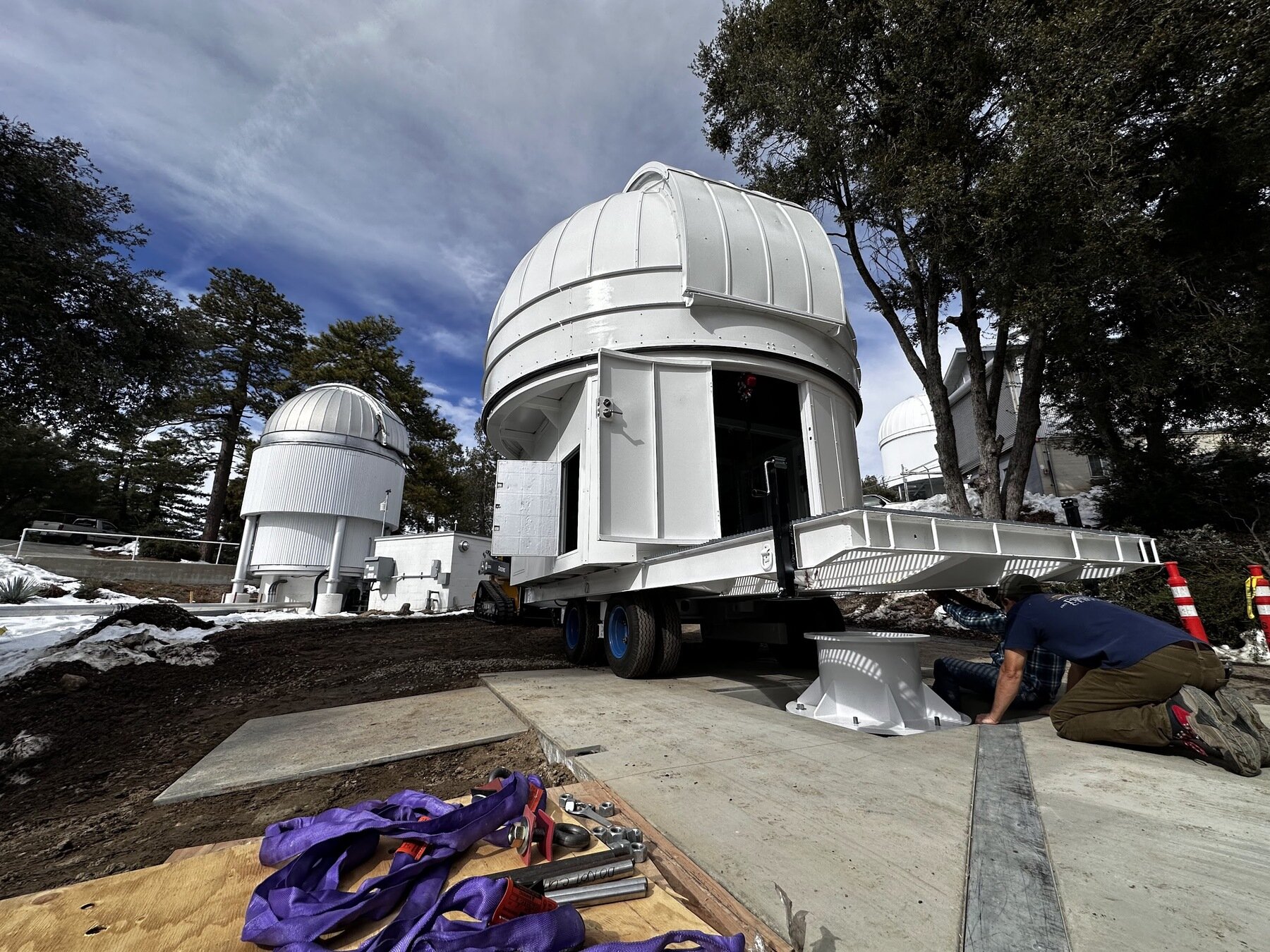
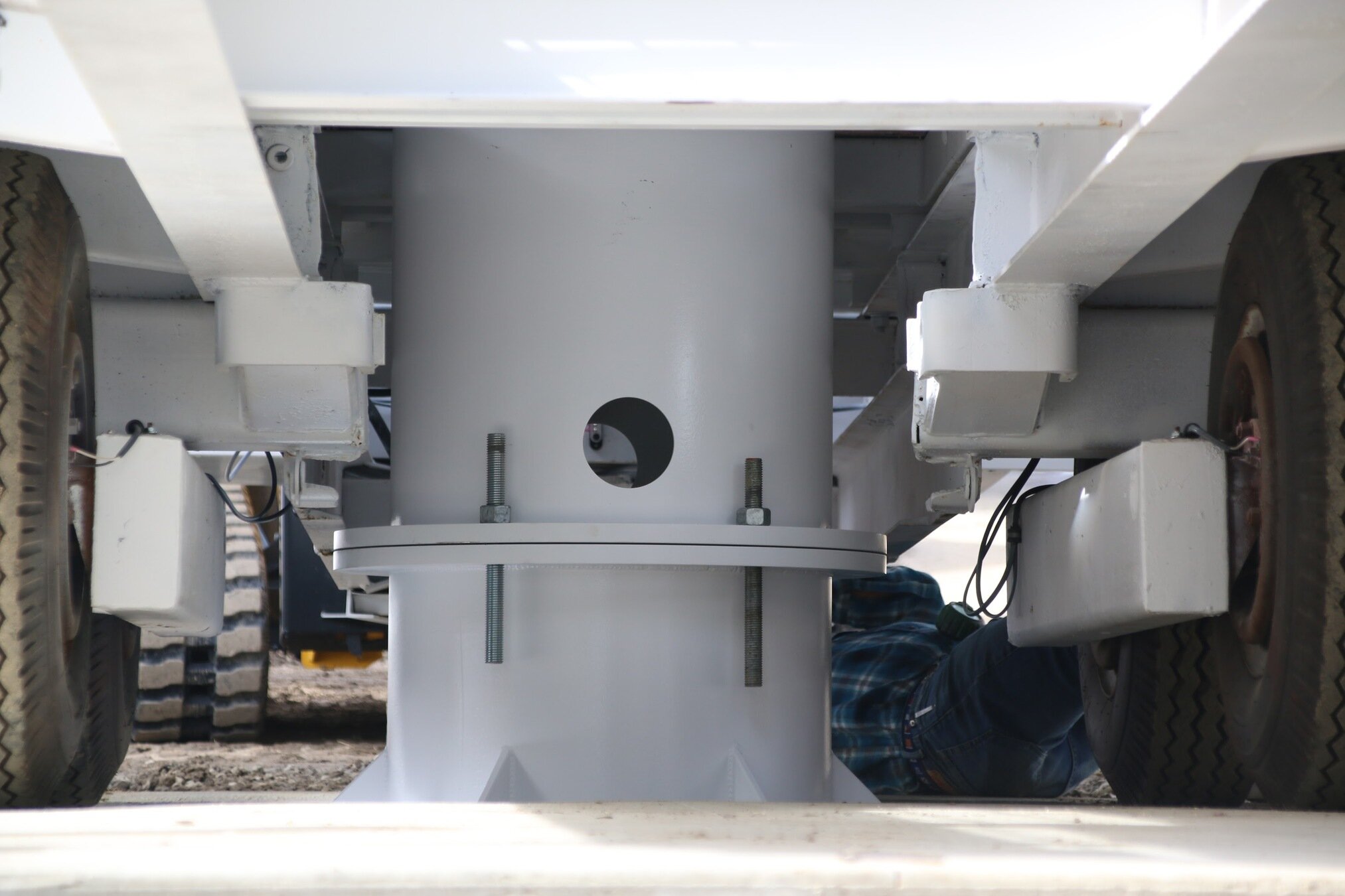

Current CHARA
Projects

S4
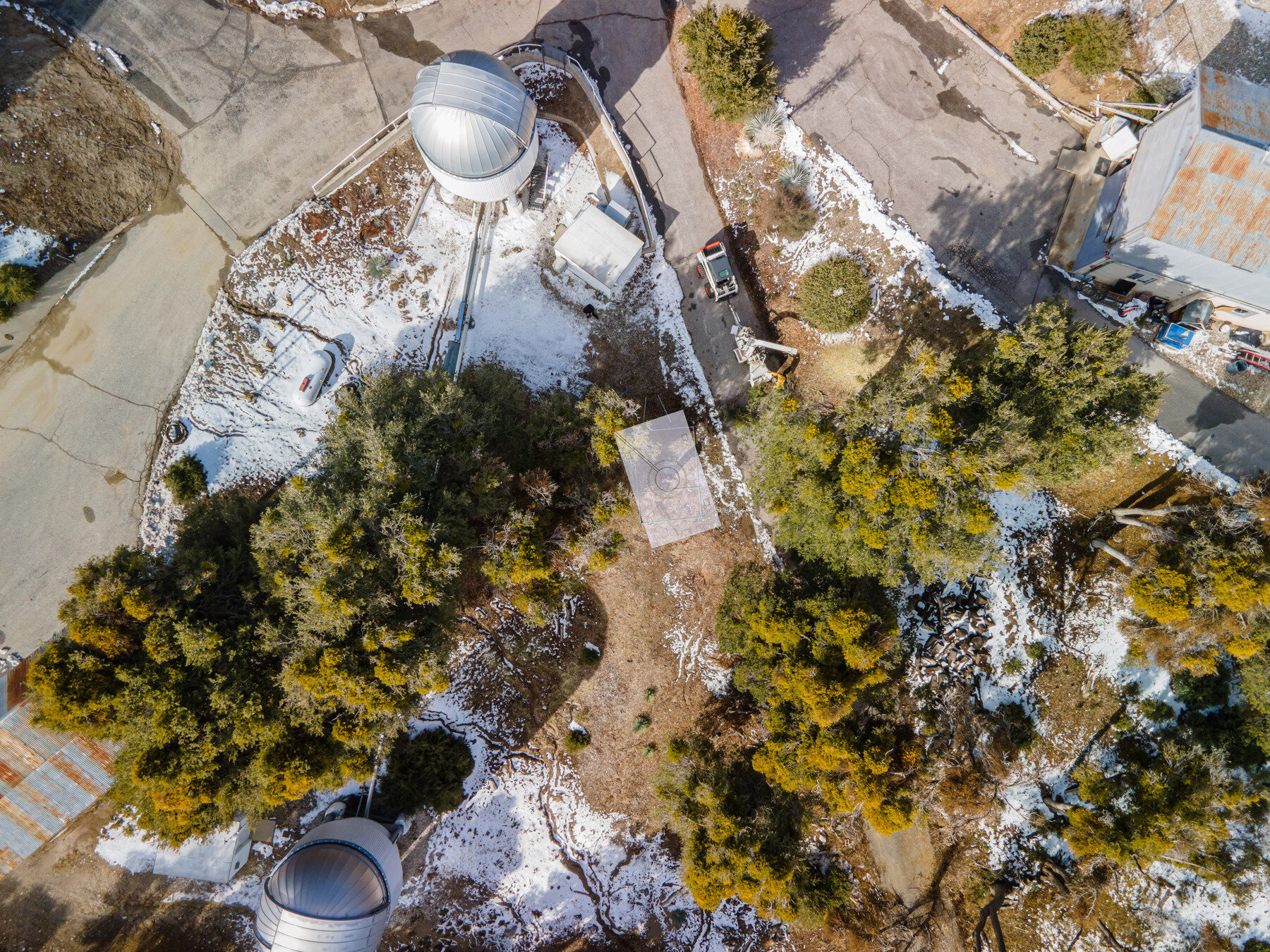
S3

ALOHA – Univ. Limoges
Single-mode PM fibers
λ=810 nm, 240 m long
Laying on the ground
Connect S1+S2
On-sky fringes
Magri, J. et al., MNRAS, 536, 266 (2025)
CMAP
Single-mode PM fibers
λ=1.6 μm, 650 m long
Trench: 18 inches deep


Fibers to S1/S2/S3 laid

- First lab fringes through CMAP fibers
- New AO system software
- STST integration - "offloading" DM corrections to beacon/M7/M10
- "Minions" environmental sensing

1100m
553m
~17m
S3
S4
W5
Max spatial resolution
• 0.06 mas at R (650 nm)
• 0.16 mas at H (1.67 μm)
• 0.20 mas at K (2.13 μm)
17 to 1100m
- 36 possible baselines: array + CMAP [6+3]

Star spots



Polaris
sigma Geminorum
zeta Andromedae
Recent Science -
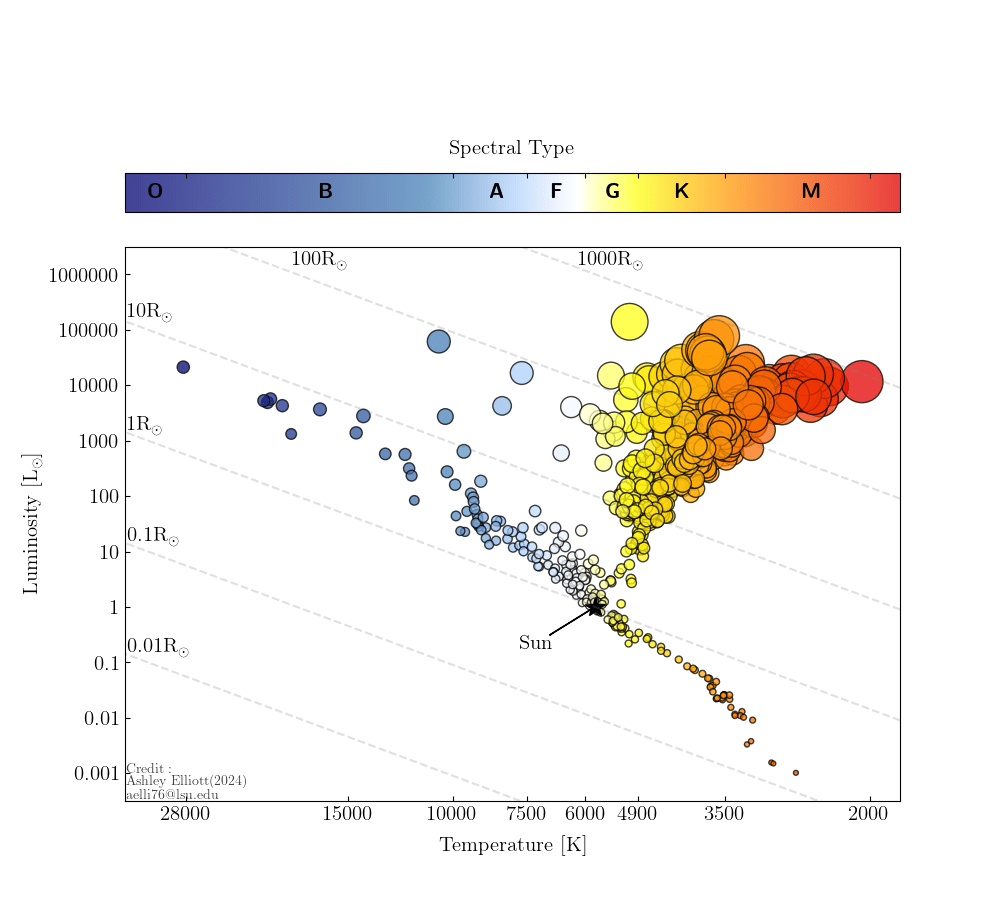
Ashley Elliott 2024
Diameters of Stars
- Angular Dia. + Parallax → Linear Radius
- Diameter + Bolometric Flux → Teff
- masses & ages from evolutionary tracks/isochrones
- evolutionary models
- color-magnitude relations
- surface brightness relations
- asteroseismic scaling relations
693 stars, σθ < 5%
Binary & Multiple Stars
Castor A and B



- Resolved the inner binary components
- Masses & 3D orbits
- Mutual orientation of components
Imaging Luminous Stars
The cool hypergiant star RW Cep experienced a Great Dimming event in 2022:


post-AGB star AC Her

Image credit: Dr Mark A. Garlick / markgarlick.com
If so, represents the first example of a polar circumbinary planet.

- Binary surrounded by large gas/dust disk
- First 3D orbit for system
- Cavity in the center not created by the tidal action of the central binary
- Planet formed in disk would be relatively stable
- Central cavity could be the result
- H & K-band images asymmetric distribution, distorted shape
- NIR spectroscopy: fading increased towards shorter wavelengths
→ implicates dust formation from stellar ejecta as explanation for the fading & unusual appearance.

Disks Around Young Stars
T Tau type disks and other Young Stellar Objects (YSOs) are the birthplaces of planets.
Herbig Be star HD 190073
V1925 Aql
SU Aur

- YSO disk is viewed almost face-on (i<20°)
- Clear view of the full extent of the inner gas disk.
- Discovered bright spot in the disk that migrated by 27° over 32 days
- Inclined & warped disk
- Flux mainly from the far side of the disk
- Near side partially obscures the central star
- Dust emission indicates formation of a disk wind from the boundaries of the warped disk

NGC 4151
Active Galactic Nuclei
bright central region of the active galactic nucleus of the Seyfert galaxy NGC 4151.

- Central structure resolved: 0.5 mas
- Ring-like structure, i = 40°
- Perpendicular to radio jet
- K-band flux probably from dust sublimation region on the face of torus surrounding black hole

- Central 2m telescope
- 1m's → 2m's
- Km+ baselines
- AO/ople/lab upgrades
- Off-target phase tracking
- Nuller
- Future beam transport
- Michelson Array
(bigger future plans)
CHARA in 2040?
- Telescope dichroic upgrade
- Automated alignment/tracking
- Upgrade labAO system
- Optimizing multi-wavelength simultaneous observations
- Fibers to all telescopes
- W5 site (1100m)
- extended/double-pass delay
- Up to 300 nights over three years of open access time via NOIRLab.
(near future plans)


Known exoplanets from the NASA Exoplanet Archive. Over-plotted yellow rectangle region of planets that could be characterized with CHARA.
Dual-Star Phase Referencing at CHARA
- Proven at VLTI already
- expect gain ~ 6 magnitudes
- Use MIRC-X + Mystic together
- allows longer integration of science fringes ~ tens of mins
"Direct imaging of a hot Jupiter would require a new phase referencing mode of a nearby star."



Central 2m Telescope
- Vacuum beam transport with fiber option
- Bundled with Delay Line Upgrades




"A gain of one magnitude doubles the available sample of AGN."
7T Imaging improvements
- AGN: dust sublimation and accretion disk could be resolved, binary black holes at the center?
- High contrast/contact/interacting binaries - Outflow/ejection/dimming events, Be star circumstellar disks relations
- Red giant ages
- Star and planet formation: enabled by greater UV coverage, sensitivity, & longer baselines
- Massive stars
- Cool stars
- HR diagram diameters: extended into late type stars
- Solar System Science: Asteroids bright enough are too big for original Array,CMAP+Silmaril → break discrepancies between radar and reflectance measurements
- Other mission support: HWO, JWST and ELT candidate finding and follow-up, Space mission technology testbeds?
"Priorities will include stellar system evolution: planetary formation and young stellar objects, imaging the sites of planet formation in the inner region of circumstellar disks, and measuring the contraction of pre-main sequence stars."
2040 CHARA Science Cases?

- Taurus star forming region (d=140 pc)
- Measure contraction of young stars to the main sequence.
- Need < 0.2 mas to achieve this.
Angular Diameter of Pre-MS stars

Image an exoplanet during transit
- There are some 250 known exoplanets with host stars accessible to CHARA.
- The new baselines will enable resolution of solar-like stars out to about 70pc in H-band.
- Numerical simulations of the transiting hot-Jupiter in HD189773 indicate that the silhouette of the planet can be measured in long baseline observations made during transits.

- Verify diameter measurements between eclipsing binaries and singles
- 8% of M dwarfs are photometrically variable by 2% in V, R, I. 92% are stable
- Study flares, spots
- Magnetically active M dwarfs have very large spots that could be imaged

20pc sample → 600 M dwarfs
- volume complete sample to 20pc
- How many could chara resolve/image?
Diameters and resolved surfaces of M dwarfs

The RECONS 25 Parsec Database
animation: Adric Riedel
Plan Outline:
- Phase 0: AC at telescopes
-
Phase 0.1: new IR dichroics for beam samplers
- Improve multi-wavelength performance
- Wider bandwidth for better STST performance
- CRED1, bluer for science, WFS on a single chip?
- Dual-star phase reference mode
-
Phase 0.5: upgrades of telAO
- Redesign M2, go to focal design?
-
Phase 1: central 2m + AO + OPLE upgrades
- LabWFS control new telDM,
- Longer delay + better metrology or double-decker carts
- Visible-sensitivity, resolution, stability → needed for nulling
-
Phase 2: replace 1m's with 2m's
- Propagate upgrades from central 2m
- Phase 3: full CMA - outer km baseline fiber array
(2024 Meeting on CHARA Future)

The full Michelson Array would offer 12 total positions, creating 66 possible baselines.
- Review the current state of capabilities & techniques in optical/IR interferometry
- Discuss quantum-enhanced methods for pushing current limitations on spatial resolution
- Establish collaborations between the astronomy & quantum communities to address science requirements and technical challenges


Charting Quantum Horizons March 2024
"Performance of the Khabiboulline Configuration of Quantum Enhanced Long Baseline Optical Interferometry"- Mcclinton & Ridgeway (AAS 2025)
"Towards quantum-enhanced long-baseline optical/near-IR interferometry"
Rajagopal et al. (2024)

open-air or quantum-enhanced future beam transport?
backup slides
Risks:
very uncertain US environment
Funding options:
- NSF
- private: Heising-Simons Foundation, Keck, Kavli Instititute
- extend the consortium?
- other universities?
- National lab status?
- International partners?
Next generation of interferometrists:
the CHARA Array, VLTI, and other interferometers should continue to host educational workshops in the same vein as the VLTI and Michelson Schools.


Fire & climate change affects all facilities

Meeting on CHARA Array future planning (2024)
-
Telescopes
-
More/bigger apertures
- <27% central obscuration, RC or Mersenne, f/2
-
Planewave or AMOS
- PW: 1-3 yrs until a 2m, ~$2.5 million ea, $100k for M4-6
-
questions on pupil stability and flexure of the PW scopes.
- COTS hexapod might handle this (also option for current scopes)
- RC vs Mersenne
- Easier for aligning telescope, acq setup easier, smaller DMs/optics, fiber injection or expand beam to inject into the light pipes
- Move existing telescopes to CMAP sites?
- 1m outriggers? 6x2m + 4x1m array? 45 baselines!
- need to expand OPLE....
-
More/bigger apertures
- OPLE
- Build up the 7th & 8th lines
- Adapt STS/STST, metrology
- "Stacked" upper level delay cart over the 7 & 8 line?
- Reduce lab vibrations
- Enable delay for fiber-fed telescope or open air too?
- Smaller delay optics? optimize for fiber?
- Upgrade opto-mechanical parts
- Carts go wireless
- eliminate cable pulley/vibration issues.
- Test double pass cart scheme to allow more delay space for 1km+ baselines
- Use fixed open air delay to improve pop performance
-
Extend existing rails to back of OPLE (through storage)?
- new metrology system (current wouldn't reach beyond existing rail limit)
- Build up the 7th & 8th lines
- TELAO & TT
- New dichroic for better IR+vis simultaneous ops
- TELAO upgrade for visible wavelengths:
- Keep the Andors but upgrade the lenslets and DMs
- Benefits SPICA and science cases
- NIR TT tracking in the lab for red stars with a CRED1 camera
- replace C-RED2 of STST
- As we are targeting fainter stars, many science targets have V > 12
- Having tip-tilt tracking in the near-infrared will allow us to access these targets, although without AO.
- Beam stabilization in the lab is currently limited by CRED2 of STST.
- Silmaril/NIRO upgrade: include using NIRO for IR TT tracking
- Speed up/automate more on-sky alignment
- Increase time on target
- LabAO/STST
- Upgrade lab DM so we have a true "flat"
- Andor OCAM2: vis wfs camera in lab.
- If sensitive enough camera, could correct off the star instead of blue beacon
- Could use the same camera for multiple beams
- STST upgrade - cameras, beam sampler IR dichroic
- Wider spectrum to STST
- Or eliminate labDM and just have fast TT in lab using starlight ....if you have better telDM
- Nuller in 5-6 yrs?
- J or L-band
- tri coupler (Tuthill/GLINT)
- photonic lantern nuller (Xin 2024, JATIS)
NOIRLab Open access time
1000 ext applied?
2040
800 ext awarded?
300+ internal?

Total of 296 internal PI + CoI.
- 255 open access investigators awarded time
- 152 open access investigators applied but were not awarded time (potential untapped users).
- Total ~ 700 investigators awarded or applied for time.




2010 Science

Exoplanet Systems
detailed stellar characteristics that are required to find the exoplanet properties.
- Radius and Teff of host
- Mass + age from evolutionary tracks
- Size of habitable zone
- Radius of transiting planets
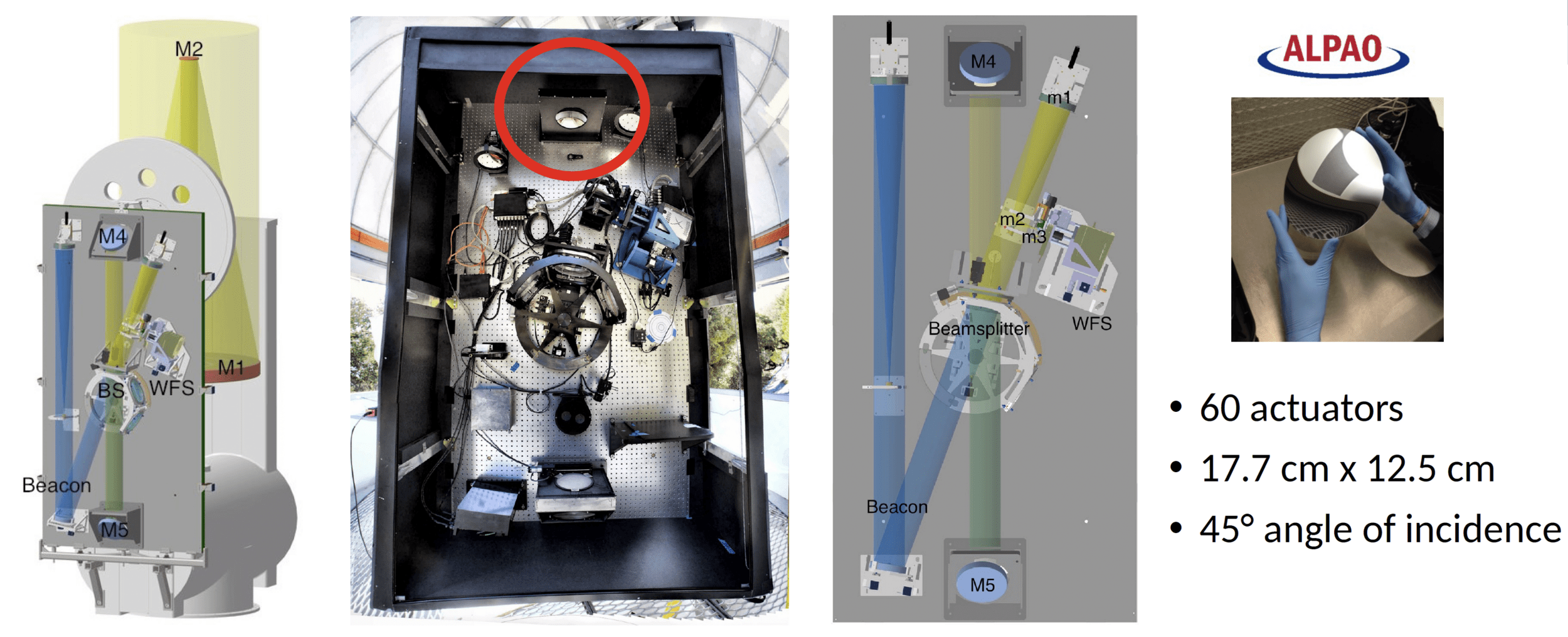
TelAO
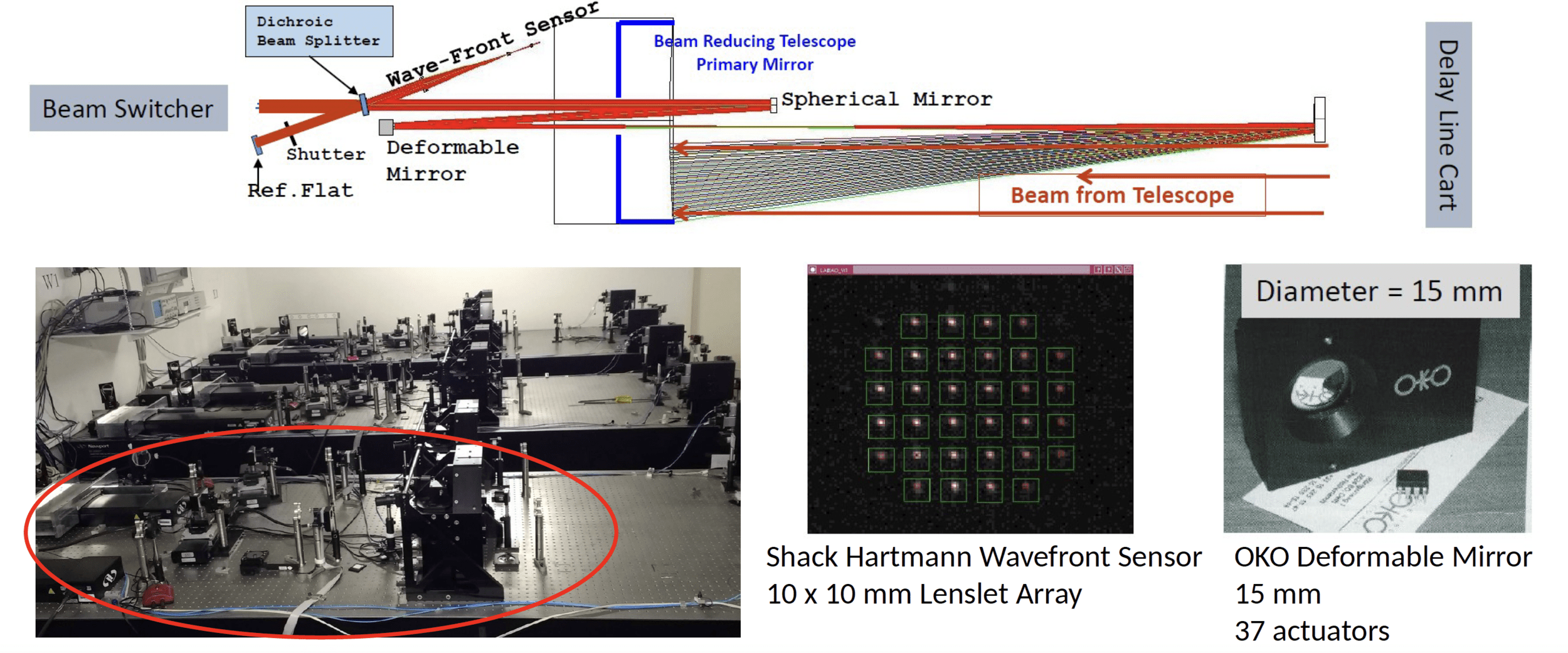
LabAO
WFS
phase
DM
(500 frame avg of cal source)
image
new AO software
chara-bnl
By Nic Scott
chara-bnl
- 335



